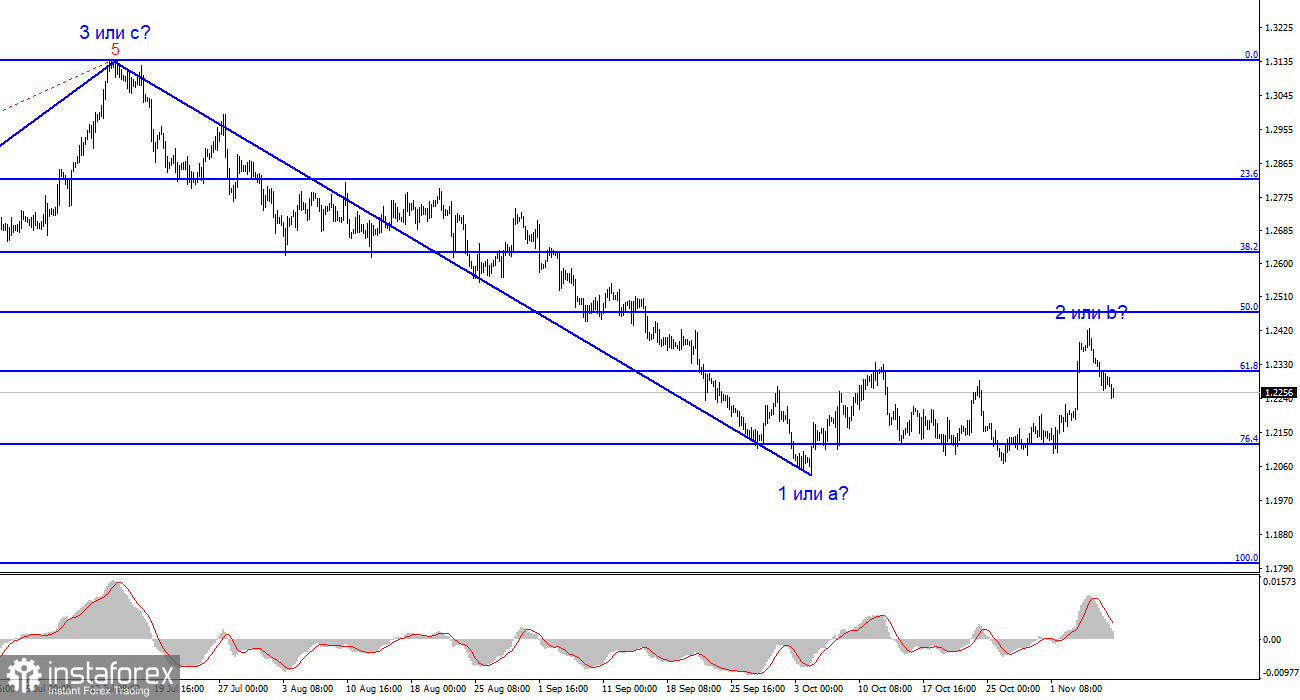On Wednesday, both instruments initially fell, but eventually rose. I assume that the sudden drop in demand for the U.S. dollar was triggered by Federal Reserve Chair Jerome Powell's speech, but upon writing this article, there is no information available about his statements and remarks. Therefore, we can only speculate about what Powell told the markets. Most likely, this information will become available on Thursday.

I will remind you that inflation indicators remain important for the markets as they directly influence the monetary policies of all central banks. Lately, its impact on market sentiment has weakened because inflation has subsided, and central banks have already reached peak interest rate levels. However, inflation may still hold some surprises in the future. Some analysts believe that the fight against high inflation will last much longer than central banks currently suggest. The Fed may start lowering interest rates next year, and the Bank of England may do the same. The European Central Bank and the BoE are not expecting inflation to reach around 2% before 2025, but over the next two years, so many geopolitical and economic events could occur that all forecasts may need to be revised.
There's a rule that roughly determines the size of the interest rate in line with inflation. According to this rule, the ECB, the Fed, and the BoE should raise their rates to 6-7% to expect a quick return of inflation to the target level. Obviously, all three central banks are not ready to follow this rule and are willing to wait a little longer to achieve the goal, rather than further tightening at the expense of the economy.
There are quite a few members of the FOMC who doubt that the rate has risen strongly enough. And it's not just one or two policymakers. Based on this, the Fed is the closest to a new tightening move. Some economists believe that the Fed will not lower the rate next year; the entire year will be dedicated to fighting high inflation. In my opinion, this is good news for the US dollar, as the Fed is the only central bank that the markets believe may lift interest rates once more.
Based on the analysis, I conclude that a bearish wave pattern is still being formed. The pair has reached the targets around the 1.0463 level, and the fact that the pair has yet to breach this level indicates that the market is ready to build a corrective wave. It seems that the market has completed the formation of wave 2 or b, so in the near future I expect an impulsive descending wave 3 or c with a significant decline in the instrument. I still recommend selling the instrument. But be cautious, as wave 2 or b could theoretically take on an even more prolonged form.

The wave pattern for the GBP/USD pair suggests a decline within the downtrend segment. The most that we can hope for the pound is a correction. At this time, I can already recommend selling the instrument because wave 2 or b has ultimately taken on a convincing form. Initially, just a good amount of short positions should be enough because there is always a risk of complicating the existing wave.





















